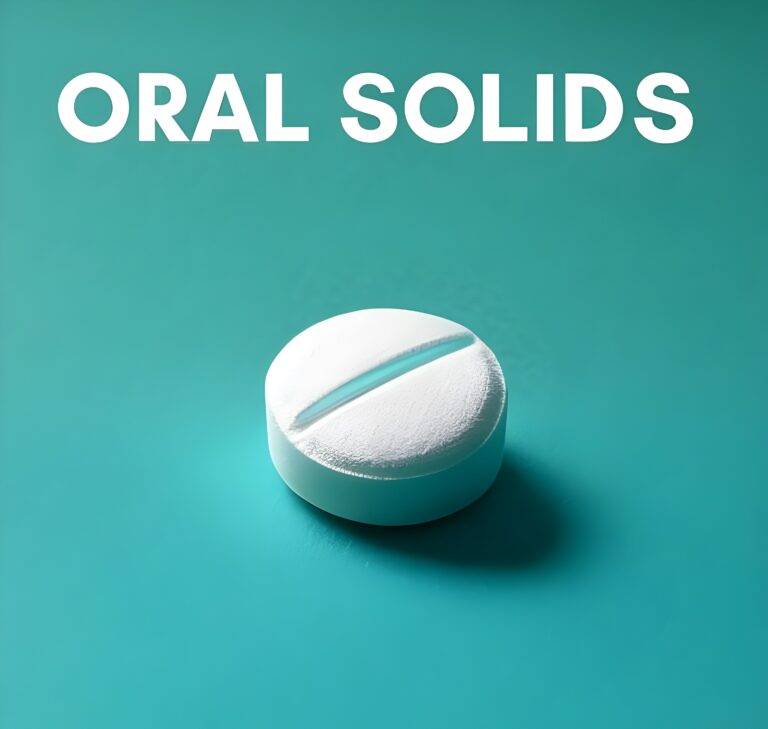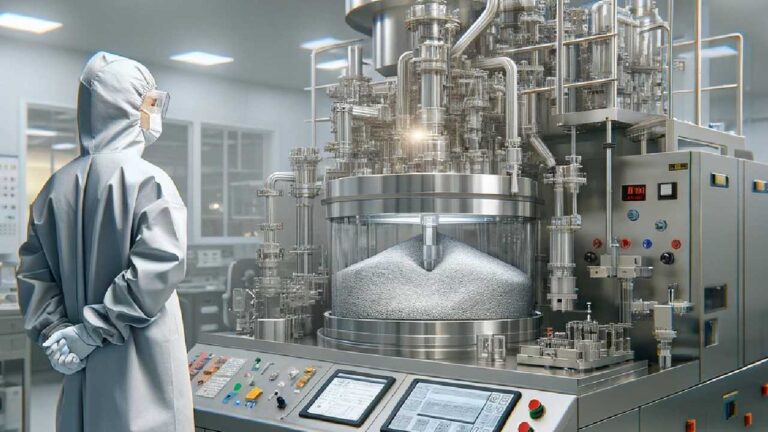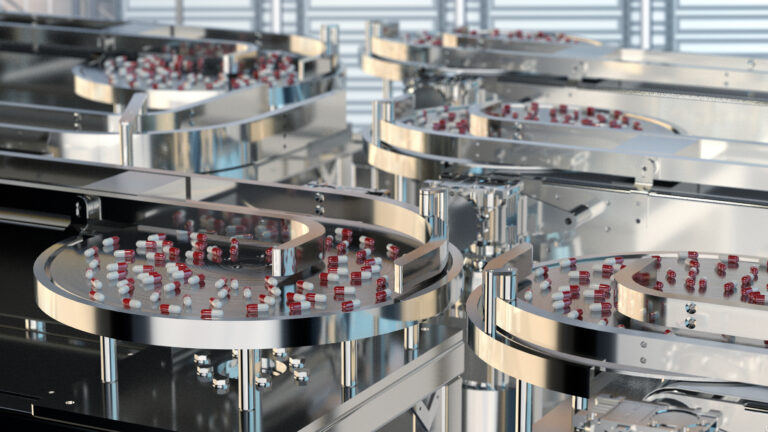Emulsions are heterogeneous, biphasic, and thermodynamically unstable systems composed of two immiscible fluids, such as oil and water, stabilized by an emulsifying agent. The dispersed phase consists of small globules of one liquid distributed throughout another liquid in which it is immiscible.
These drug delivery systems typically contain an emulsifier or emulsifying agent, which acts as a stabilizer, preventing the separation of liquids that do not ordinarily mix. Surface-active ingredients, or surfactants, adsorb at the oil-water interface during emulsion preparation, protecting the newly formed droplets from immediate recoalescence. This increases the kinetic stability of the mixture, ensuring that the immiscible compounds remain combined.
Without emulsifiers, emulsion dosage forms become unstable and eventually separate into two distinct liquid layers. An emulsifier, such as lecithin, binds to both oil and water, stabilizing the emulsion by preventing the separation of the two phases.
Emulsions can form naturally, but they are often created through mechanical means like agitation, provided the two fluids have no mutual solubility. While emulsion formulations are not commonly used for oral ingestion, they are increasingly popular in the preparation of parenteral (complex injectable formulations) and topical dosage forms, such as ointments, creams, and lotions.
Emulsions are utilized in a wide range of industrial and pharmaceutical products, including ocular, topical, mucosal, intravenous, intramuscular, and oral products. They also serve as precursors for polymer microparticles, solid nanoparticle lipid emulsions, inorganic nanoparticles, and oil-filled microcapsules.

Benefits of Emulsion Dosage Forms:
Taste Masking: Unpleasant tastes can be masked by adding sweetening and flavoring agents to the external phase.
Improved Bioavailability: Emulsions enhance the bioavailability of drugs.
Increased Patient Compliance: Emulsions can be administered to individuals who have difficulty swallowing solid dosage forms.
Sustained Release Drug Delivery: Emulsions can provide sustained release of drugs.
Nutritional Supplements: Emulsions are used in nutritional supplements.
Administration of Oily Formulations: Oil-in-water emulsion drug delivery systems facilitate the administration of oily formulations.
External Use Preparations: Emulsions are used in creams, lotions, aerosols, and parenteral nutrition.
Avoidance of Gastrointestinal Problems: Emulsions help avoid gastrointestinal issues and the first-pass metabolic effect.
Intramuscular Injections: Water-soluble drugs and vaccines can be administered via intramuscular injections for slow release.
What are the Different Types of Emulsions?
Emulsions can be classified based on the dispersed phase and the size of the liquid droplets.
Based on the Dispersed Phase:
Oil-in-Water Emulsion (O/W):
- In this type of emulsion, oil is the dispersed phase, and water is the dispersion medium. A common example is milk, where fat globules are suspended in water.
Water-in-Oil Emulsion (W/O):
- Here, water forms the dispersed phase, and oil acts as the dispersion medium. Examples include butter and cold cream.
Multiple Emulsions (e.g., O/W/O or W/O/W):
- These complex systems consist of both W/O and O/W emulsions simultaneously and require two distinct surfactants for stabilization. In multiple emulsions, the internal and external phases are alike, separated by an intermediate phase that is immiscible with the two like phases. For example, in a W/O/W emulsion, a W/O emulsion is dispersed in a water-continuous phase.
Based on the Size of Liquid Droplets:
Macroemulsions:
- These are kinetically stabilized mixtures of at least two immiscible liquids, where one liquid has droplets with a diameter greater than 0.1 mm. Macroemulsions scatter light effectively and appear milky due to their droplet size.
Microemulsions:
- Microemulsions are clear, thermodynamically stable, isotropic liquid mixtures of oil, water, and surfactant, often combined with a cosurfactant. They are stable because the individual droplets of the dispersed phase are less than 100 nanometers in diameter.
Nanoemulsions:
- Nanoemulsions are nano-sized emulsions designed to improve the delivery of active pharmaceutical ingredients (APIs). These thermodynamically stable isotropic systems mix two immiscible liquids into a single phase using an emulsifying agent, such as a surfactant and cosurfactant. Nanoemulsions or microemulsions can be lipid emulsions.
Pharmaceutical Emulsion Types:
Oral Emulsions:
- Oil-in-Water Emulsions (liquid)
External Emulsions:
- Lotions (liquid)
- Creams (semi-solid)
- Liniments
Parenteral Emulsions (Complex Injectable Formulations):
- O/W (parenteral nutrition)
- O/W or W/O (intramuscular)
What are the Different Methods of Manufacturing Emulsions?
Emulsions can be prepared using various methods, depending on the nature of the components and the equipment available. The scale of production, whether small or large, also influences the method used.
Small Scale Emulsification Methods:
Continental (Dry Gum) Method:
- In this method, the oil is first triturated with gum and a small amount of water to form the primary emulsion. The trituration continues until a characteristic ‘clicking’ sound is heard, and a thick white cream is formed. Once the primary emulsion is achieved, the remaining quantity of water is slowly added to form the final emulsion.
English (Wet Gum) Method:
- Here, gum and water are first triturated together to form a mucilage. The required quantity of oil is then gradually added in small proportions with thorough trituration to form the primary emulsion. After forming the primary emulsion, the remaining quantity of water is added to make the final emulsion.
Bottle (Forbes Bottle) Method:
- This method is suitable for preparing emulsions of volatile oils or oleaginous substances with very low viscosities. It is not suitable for very viscous oils as they cannot be sufficiently agitated in a bottle. The bottle method is a variation of the dry gum method. One part powdered acacia (or another gum) is placed in a dry bottle, and four parts oil are added. The bottle is capped and thoroughly shaken. The required volume of water is then added all at once, and the mixture is shaken thoroughly until the primary emulsion forms.
Large Scale Emulsification Methods:
Large-scale emulsification is employed to manufacture emulsions in bulk quantities. Mechanical equipment such as mechanical stirrers, propeller mixers, colloid mills, and ultra-sonifiers are used to facilitate agitation. These technologies agitate large quantities of immiscible liquids by supplying the systems with energy, ultimately creating the desired emulsion formulations.
Related Services







FAQs
Here are some frequently asked questions about Semi-Solids & Gels
Semi-solid dosage forms include creams, ointments, gels, and pastes, designed for external application to the skin or mucous membranes. They are characterized by their thick consistency, which allows them to adhere to the application site for effective drug delivery. These dosage forms are used to treat a wide range of conditions, from skin diseases to localized pain relief.
Semi-solid dosage forms offer several benefits, including targeted drug delivery to specific areas, reduced systemic side effects, and enhanced patient compliance due to ease of application. They can provide both local and systemic effects, depending on the formulation, and are particularly useful for delivering drugs that are not suitable for oral administration due to stability or bioavailability issues.
The formulation of semi-solid dosage forms involves the selection of appropriate base materials (such as hydrocarbons for ointments, water or alcohol for gels, and various emulsifiers for creams) that determine the product's texture, stability, and drug release characteristics. Active pharmaceutical ingredients (APIs) are then incorporated into the base, along with other excipients like preservatives, antioxidants, and skin conditioners, to achieve the desired therapeutic effect and product stability.
Stability considerations for semi-solid dosage forms include maintaining the consistency, efficacy, and integrity of the product throughout its shelf life. This involves ensuring the physical stability (to prevent separation or crystallization of components), chemical stability (to prevent degradation of active ingredients), and microbiological stability (to prevent contamination). Stability testing under various conditions is critical to determining the product's expiration date.
Ensuring uniformity of dosage in semi-solid forms involves rigorous manufacturing processes and quality control measures. The manufacturing process must ensure thorough mixing and homogenization of the API throughout the base. Quality control tests, including content uniformity and viscosity measurements, are conducted on each batch to ensure that the final product meets the specified criteria for uniformity and consistency.
Yes, semi-solid dosage forms can be designed for controlled release of the active ingredient. This is achieved through the use of specific formulation strategies and excipients that modify the drug release profile, such as polymers that form a matrix with the drug or encapsulation techniques that slow the diffusion of the drug from the base. Controlled release formulations can enhance therapeutic efficacy and improve patient compliance by reducing the frequency of application.
Packaging options for semi-solid dosage forms include tubes, jars, pump dispensers, and single-use sachets. The choice of packaging is based on the product's viscosity, intended use, and stability requirements. Packaging materials must protect the product from contamination, light, and air, and be compatible with the formulation to prevent interaction with the packaging.
Quality assurance testing for semi-solid dosage forms includes physical, chemical, and microbiological tests. Physical tests evaluate the product's appearance, pH, viscosity, and spreadability. Chemical tests assess the potency and purity of the active ingredients and the presence of degradation products. Microbiological tests ensure the product is free from harmful microorganisms. All tests are conducted in accordance with regulatory guidelines to ensure product safety and efficacy.
c
Regulatory considerations for semi-solid dosage forms involve compliance with guidelines provided by regulatory agencies such as the FDA, EMA, and others. These guidelines cover the formulation, manufacturing process, quality control, packaging, labeling, and stability testing. The submission of a New Drug Application (NDA) or Abbreviated New Drug Application (ANDA) is required for market approval, including detailed documentation of the product's formulation, manufacturing process, and validation of analytical methods.
Hycon Labs offers comprehensive services for the development and manufacturing of semi-solid dosage forms, including formulation development, process optimization, scale-up, manufacturing, and packaging. Hycon can provide expertise in selecting appropriate base materials, excipients, and manufacturing processes to meet the product's specifications and regulatory requirements. Additionally, Hycon can assist with stability studies, quality assurance testing, and regulatory submission, facilitating a smooth path from concept to commercialization.






























